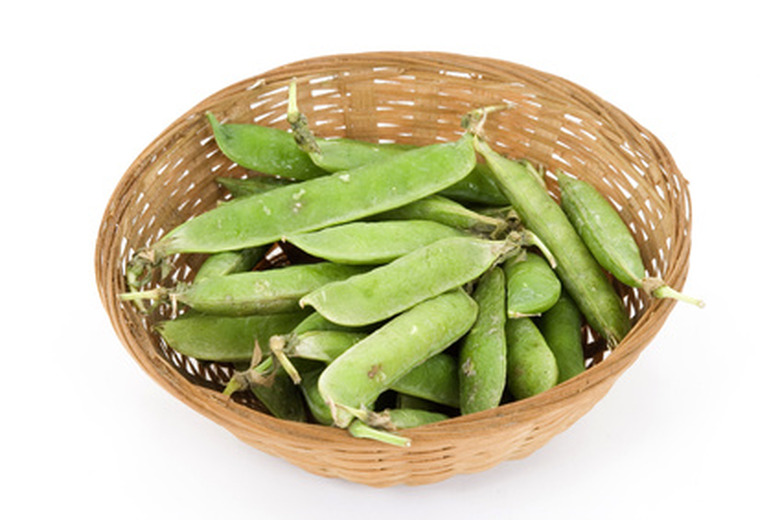How To Grow Sugar Snap Peas In Kentucky
Sugar snap peas are growing in popularity. The edible pod and peas inside are sweet in flavor and great eaten raw or cooked. They can be canned, frozen and dried for future use.
Sugar snap peas varieties are available in bush or vine types. Bush varieties mature quickly and are easy to harvest, but generally less productive than vines. Vine varieties need the support of a trellis, cage or fence. Both vine and bush varieties are a cold-hardy crop, best grown in cool weather.
- Sugar snap peas are growing in popularity.
- Both vine and bush varieties are a cold-hardy crop, best grown in cool weather.
Step 1
Plant sugar snap peas in the early spring, as soon as the soil is workable. A second planting can be made in the fall.
Step 2
Choose a spot in the garden with good drainage and full sun or partial shade. If good drainage is not available, plant in raised beds.
Step 3
Work a good quality organic fertilizer into the soil before planting.
Step 4
Plant multiple crops, every week or two, until mid-spring. A single planting will produce for about two weeks; successive planting will provide peas for a longer period.
- Plant sugar snap peas in the early spring, as soon as the soil is workable.
Step 5
Plant sugar snap pea seeds 1/2 to 1 inch deep and 2 inches apart in a row or bed.
Step 6
Plant vine varieties on either side of a trellis or support.
Step 7
Control weeds by hand pulling or lightly hoeing during the first six weeds.
Step 8
Provide approximately 1 inch of water per week. Water peas early in the day to allow the foliage to dry out quickly.
Step 9
Harvest peas as they mature. Sugar snap peas are ready when the seeds are plump and fill out the pods. Allowing peas to stay on the plant past their prime will result in starchy peas that have lost their sweetness.
- Plant sugar snap pea seeds 1/2 to 1 inch deep and 2 inches apart in a row or bed.
- Water peas early in the day to allow the foliage to dry out quickly.
Step 10
Plant peas in a different location next year to reduce soil-borne diseases.
Sweet Peas & Sugar Snap Peas?
Sweet peas are inedible because the seeds are poisonous. Instead, sweet peas provide beautiful flowers for a garden area. The distinctive flowers produce blossoms in all colors except yellow. Sweet pea plants vary greatly in size; some consist of long vines that climb on trellises and poles. The flowers from vine-type sweet pea plants are used as cut flowers, and bush sweet pea plants have short stalks and perform well in flowerbeds and containers. Sugar snap peas are a type of edible-pod peas. They're picked for consumption when the pods start to fatten up and the seeds are relatively small. Both types of plants fall under the cool-season plant classification and prefer a moist soil. Peas are often planted about a month before the date of the last frost in the spring. They grow well when the temperature is about 70 degrees Fahrenheit and become less productive in hot weather.
- Plant peas in a different location next year to reduce soil-borne diseases.
- The flowers from vine-type sweet pea plants are used as cut flowers, and bush sweet pea plants have short stalks and perform well in flowerbeds and containers.
Things Needed
- Shovel
- Hoe
- Sugar snap pea seeds
- Organic fertilizer
References
- University of Kentucky Cooperative Extension: English and Edible Pot Peas
- Ohio State University: Growing Peas and Snap Beans
- University of Illinois Extension: Peas
- University of California: Sonoma County Master Gardeners: Peas
- Cornell University: Peas
- University of Illinois Extension: Watch Your Garden Grow: Peas
- Utah State University: Peas in the Garden
